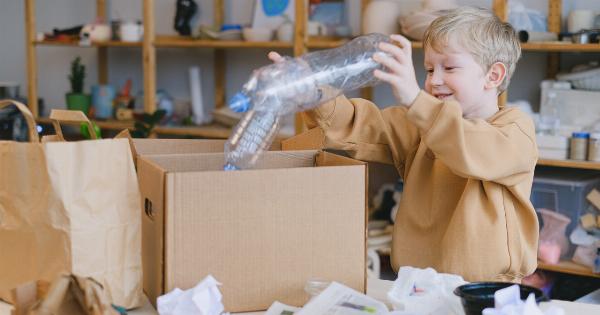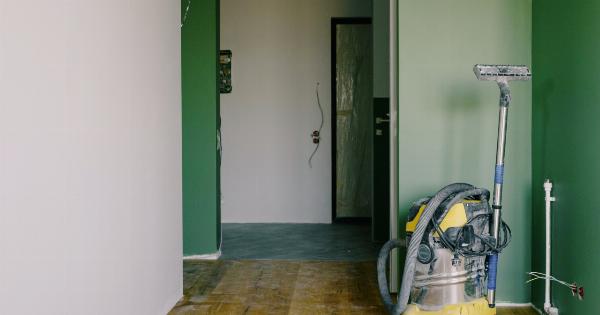Our homes are supposed to be our safe havens, where we can relax and unwind. However, there may be hidden health hazards lurking in every corner of your home that you are not even aware of.
From the air we breathe to the products we use, it’s essential to be aware of these surprising health hazards and take steps to minimize their impact on our well-being. Here are 8 surprising health hazards that might be hiding in your home:.
Cleaning Products
While cleaning products are meant to keep our homes clean and germ-free, many of them can actually pose health risks.
Certain cleaning agents contain toxic chemicals such as ammonia and formaldehyde, which can irritate the skin, eyes, and respiratory system. Some cleaning products also contribute to indoor air pollution, as they release volatile organic compounds (VOCs) that can worsen existing respiratory conditions, allergies, and even cause cancer.
It is advisable to choose natural, eco-friendly cleaning products or make your own using ingredients like vinegar and baking soda.
Dirty Carpets
Carpets can harbor a multitude of allergens, dust mites, and even mold, all of which can negatively impact indoor air quality and respiratory health.
Regular vacuuming and deep cleaning can help minimize these issues, but it’s also a good idea to limit carpeted areas in your home, especially if you or your family members have allergies or asthma. Opt for easy-to-clean flooring options like hardwood or tile, or consider using area rugs that can be easily washed to reduce allergen buildup.
Radon Gas
Radon is an odorless, colorless gas that can seep into your home through cracks and gaps in the foundation. Long-term exposure to high levels of radon gas can significantly increase the risk of lung cancer, especially in non-smokers.
It is recommended to test your home for radon levels and take steps to mitigate any issues. Simple measures such as sealing foundation cracks and installing a radon mitigation system can help lower radon levels and keep your home safe.
Electromagnetic Fields (EMFs)
EMFs are invisible fields of energy emitted by various electronic devices and appliances.
While the long-term health effects of EMF exposure are still debated, some studies suggest that prolonged exposure to high levels of EMFs may contribute to issues such as sleep disturbances, headaches, and even certain types of cancer. To minimize EMF exposure, keep a distance from high-emitting devices like microwaves and ensure your bedroom is free from electronic devices for a restful sleep.
Lead Paint
Homes built before 1978 may still have traces of lead-based paint on the walls, which can pose serious health risks, especially to young children.
Ingesting or inhaling lead dust or chips can lead to lead poisoning, which can cause developmental delays, learning disabilities, and other severe health issues. If you suspect your home may have lead paint, it is crucial to have it tested by a professional and take necessary steps to properly contain or remove the lead-based paint.
Poor Indoor Air Quality
Indoor air pollution is a significant concern as we spend the majority of our time indoors. Common sources of indoor air pollutants include tobacco smoke, cooking fumes, pet dander, and off-gassing from furniture and building materials.
Long-term exposure to poor indoor air quality can lead to respiratory issues, allergies, and other health problems. Regularly ventilate your home by opening windows, using air purifiers, and ensuring proper maintenance of heating, ventilation, and air conditioning (HVAC) systems to improve indoor air quality.
Mold and Mildew
Mold and mildew thrive in damp, poorly ventilated areas, such as bathrooms and basements. Exposure to mold spores can trigger allergies, asthma attacks, and even lung infections in individuals with weakened immune systems.
To prevent mold growth, keep humidity levels in check, fix any water leaks immediately, and ensure proper ventilation in moisture-prone areas. If you discover mold growth in your home, it’s crucial to remove it promptly and address the underlying moisture issue to prevent its recurrence.
Unsafe Drinking Water
Although tap water is considered safe in many countries, it can still be contaminated with harmful substances. Old pipes, industrial pollutants, and even natural occurrences can sometimes lead to water contamination.
Common contaminants include lead, arsenic, bacteria, and pesticides. To ensure safe drinking water, consider installing a quality water filter or have your water tested by a certified laboratory to identify any contaminants that may be present.
Chemical Flame Retardants
Many household items, such as furniture, mattresses, and electronics, contain flame-retardant chemicals to meet fire safety standards. However, these chemicals can off-gas and contaminate the air in your home.
Some flame retardants have been linked to hormone disruption, cancer, and other health issues. Whenever possible, choose furniture and products labeled as flame retardant-free or made with naturally flame-resistant materials.
Being aware of these surprising health hazards and taking necessary precautions can help create a healthier and safer home environment for you and your loved ones.
Regular maintenance, proper ventilation, and conscious choices in the products you use can go a long way in minimizing the risks associated with these lurking hazards.





























